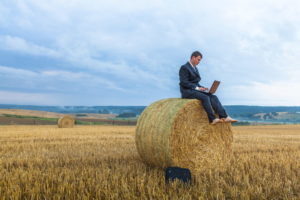Can Rural Revitalization Be a Benefit From COVID-19?
go.ncsu.edu/readext?729371
en Español / em Português
El inglés es el idioma de control de esta página. En la medida en que haya algún conflicto entre la traducción al inglés y la traducción, el inglés prevalece.
Al hacer clic en el enlace de traducción se activa un servicio de traducción gratuito para convertir la página al español. Al igual que con cualquier traducción por Internet, la conversión no es sensible al contexto y puede que no traduzca el texto en su significado original. NC State Extension no garantiza la exactitud del texto traducido. Por favor, tenga en cuenta que algunas aplicaciones y/o servicios pueden no funcionar como se espera cuando se traducen.
Português
Inglês é o idioma de controle desta página. Na medida que haja algum conflito entre o texto original em Inglês e a tradução, o Inglês prevalece.
Ao clicar no link de tradução, um serviço gratuito de tradução será ativado para converter a página para o Português. Como em qualquer tradução pela internet, a conversão não é sensivel ao contexto e pode não ocorrer a tradução para o significado orginal. O serviço de Extensão da Carolina do Norte (NC State Extension) não garante a exatidão do texto traduzido. Por favor, observe que algumas funções ou serviços podem não funcionar como esperado após a tradução.
English
English is the controlling language of this page. To the extent there is any conflict between the English text and the translation, English controls.
Clicking on the translation link activates a free translation service to convert the page to Spanish. As with any Internet translation, the conversion is not context-sensitive and may not translate the text to its original meaning. NC State Extension does not guarantee the accuracy of the translated text. Please note that some applications and/or services may not function as expected when translated.
Collapse ▲ There doesn’t appear to be any segment of our society that has been left untouched by COVID-19. Since COVID-19 emerged in March, many sectors of the US farm and food system were obliged to rapidly pivot operations in order to remain viable enterprises. Labor intensive food production required significant interventions to ensure food safety, while row crop agriculture appeared less affected. Markets were affected by the changes in eating habits, with many more families eating at home. Everyone was asking, how long will this be the new normal?
There doesn’t appear to be any segment of our society that has been left untouched by COVID-19. Since COVID-19 emerged in March, many sectors of the US farm and food system were obliged to rapidly pivot operations in order to remain viable enterprises. Labor intensive food production required significant interventions to ensure food safety, while row crop agriculture appeared less affected. Markets were affected by the changes in eating habits, with many more families eating at home. Everyone was asking, how long will this be the new normal?
Businesses across the globe embraced remote digital work arrangements and this might be critically important to rural America as internet access continues to penetrate unserved areas. Dr. Mike Walden, Distinguished Professor and Extension Economist at North Carolina State University, shared his perspective on this aspect of COVID-19’s beneficial effects in a recent CALS news item entitled “You Decide: Will We Return to Farm Life?” In this article, Dr. Walden wistfully reminisces about his youth on a small Southwest Ohio hog farm and suggests opportunities will only increase for all types of workers to work remotely via the internet from their home farm! If that statement intrigues you, be sure to read the whole article.
Even before the COVID-19 era, reports indicated great opportunities for revitalizing rural communities through remote working scenarios. But it is very clear that COVID-19 proved the time could be *NOW * instead of five to ten years in the future. In farm business, we encourage building resilience through multiple marketing plans. As you consider your agricultural enterprises into the future, take the time to consider the items raised by Dr. Walden as you build in decision points that acknowledge the inevitable growth in the remote digital workforce.
Farmers always consider last year’s production to plan farm decisions for the coming year. That sense of always looking forward to better times is the best example the farming community can share with the rest of American society during these challenging times.


